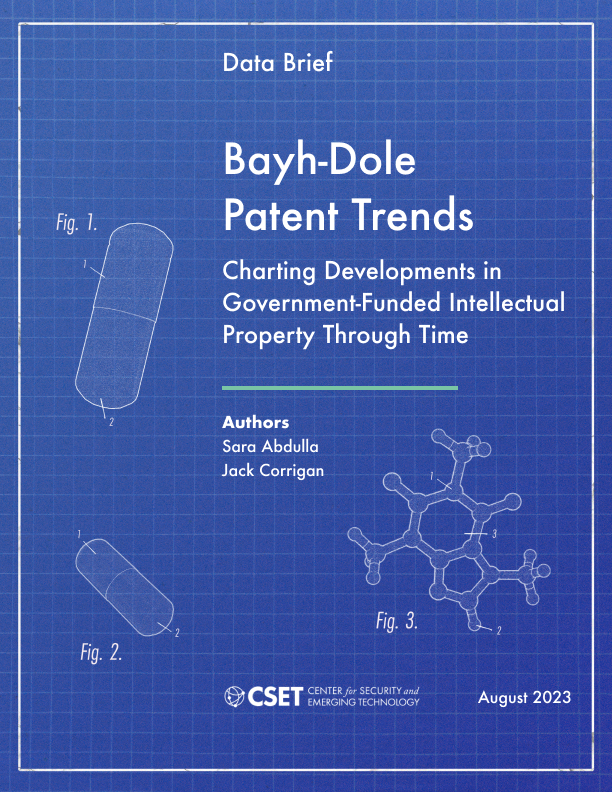Executive Summary
In the last half century, few policies have done more to transform U.S. patenting than the Patent and Trademark Act Amendments of 1980, known as the Bayh-Dole Act. By allowing private entities—rather than the U.S. government—to retain ownership of patents developed through federally funded research, the law altered incentive structures within the U.S. innovation ecosystem. Since its passage, the law has been praised for laying the foundation for academic technology transfer, allowing universities to benefit financially from moving technologies from the lab to the private sector. Others have criticized the law for privatizing the rewards of taxpayer-funded research.
Despite the Bayh-Dole Act’s prominence in the U.S. innovation ecosystem, little research has attempted to characterize the publicly-funded, privately-owned IP produced under the law. In this data brief, we shed light on this under-explored corner of the U.S. patent landscape by analyzing declassified Bayh-Dole and non-Bayh-Dole patents granted between 1981 and 2020. Our analysis finds:
- The number of Bayh-Dole patents increased substantially from 1,635 in 1981 to 7,911 in 2020. However, they have consistently accounted for a relatively small proportion (1.5 to 2.6 percent) of U.S. patents awarded in any given year.
- Bayh-Dole patents make up a larger share of patents in bioscience-related categories, like biotechnology (15 percent) and pharmaceuticals (8 percent), and defense-related categories like weapons manufacturing (10 percent). They also represent a larger share in select emerging technology categories—AI, robotics, biotechnology—than in the overall U.S. patent landscape.
- The share of Bayh-Dole patents funded by different federal agencies has changed substantially over time. In 2020, the top funders of Bayh-Dole patents included the National Institutes of Health (30 percent), Department of Defense (21 percent) and Department of Energy (15 percent).
- A substantial number of Bayh-Dole patents are awarded to universities. Nine of the top 15 recipients of Bayh-Dole patents were academic institutions.
While our analysis sheds light on major trends in the Bayh-Dole patent landscape, more research is required to understand the law’s role in the broader U.S. innovation ecosystem. Future analysis of patent licensing data, technology transfer trends, and the economic effects of march-in rights would help policymakers better understand the law’s strengths and weaknesses, and identify potential reforms that would help maximize the social and economic benefits of publicly funded research.
